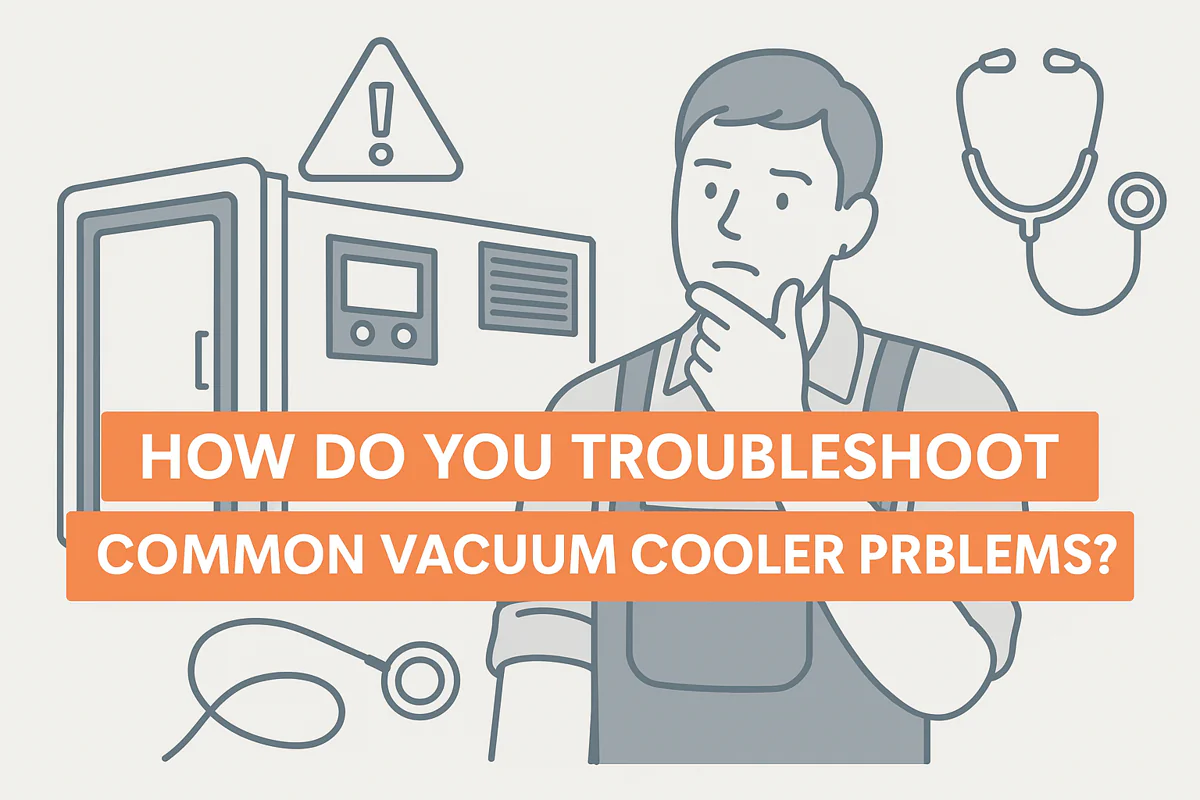
How Do You Troubleshoot Common Vacuum Cooler Problems?
Your harvest is ready, the pallets are stacking up, but your vacuum cooler suddenly stops. A red light is flashing, and every moment of downtime feels like money slipping away. The thought of a major repair during peak season is a nightmare.
Start by systematically checking the most common and simple culprits first. Most vacuum cooler issues stem from three areas: the vacuum seal, the refrigeration system’s cleanliness, or basic electrical trips. A methodical approach can solve the problem in minutes, not days.
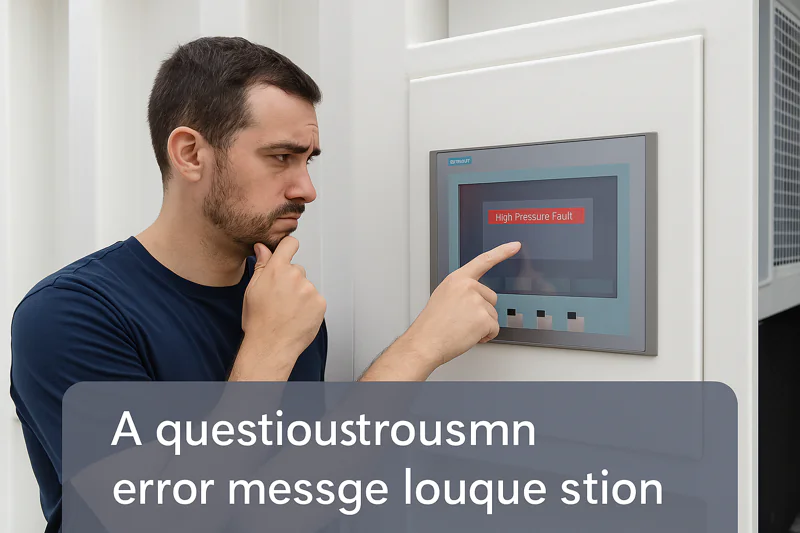
I’ve learned from countless calls over the years that panic is the enemy of a quick solution. I once got a late-night call from Carlos, a large-scale farm owner in Mexico. His machine wouldn’t pull a vacuum, and he was convinced his new, expensive vacuum pump had failed. He was already calculating the cost of flying in a technician. I calmly asked him to do one thing: take a clean, wet cloth and wipe down the entire surface of the main door seal. He called back 10 minutes later, slightly embarrassed but mostly relieved. A single, stubborn lettuce leaf had been stuck to the gasket, creating a tiny, invisible leak. That five-cent fix saved him thousands of dollars and a day of lost production. This guide is built on that principle: check the simple things first.
Why won’t my vacuum cooler reach the target pressure?
The pump is running, but the pressure gauge is barely moving, or the cycle is taking forever. You’re worried a critical, expensive component has failed, and your entire packing schedule is now at risk.
In over 90% of cases, the inability to create a vacuum is caused by a leak, not a pump failure. The most common culprit is a dirty or damaged main door seal, which prevents the chamber from being airtight.
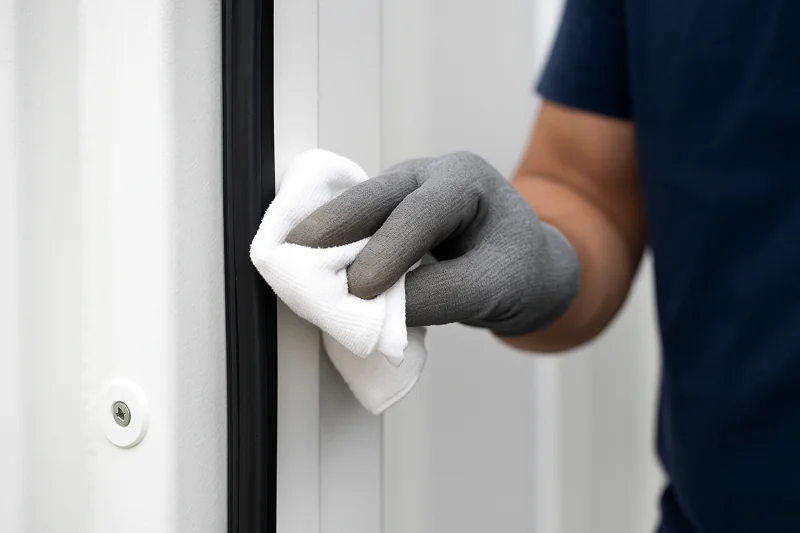
The Path of Least Resistance
Think of a vacuum chamber like a bicycle tire. Even the smallest hole will prevent it from holding pressure. For your machine, the single largest potential "hole" is the main door. The vacuum pump is incredibly powerful, but its job is to remove air from a sealed container. If air is leaking back in as fast as the pump removes it, you will never reach the target pressure required to boil water at a low temperature. This is the single most frequent issue users face, and thankfully, it’s the easiest to solve.
Your first step, always, is to inspect the door seal. This isn’t just a quick glance. Open the door and run your fingers along the entire length of the rubber gasket. Feel for any nicks, cuts, or areas that feel hard and brittle instead of soft and flexible. More importantly, look for debris. A stem, a leaf, a piece of plastic, or even a build-up of dirt can create a tiny channel for air to leak in. Thoroughly clean the gasket and the corresponding stainless-steel surface on the chamber with a damp cloth before every single cycle. Another thing to consider is alignment. Over time, heavy use can cause the door to shift slightly. Check if the door closes evenly and if the locking mechanism engages smoothly and tightly. If the seal is clean and looks intact, you can perform a simple "dollar bill test1." Close the door on a piece of paper. If you can pull the paper out easily, you have found your leak. The hinges or latches may need a simple adjustment. Only after you have 100% ruled out the door seal should you start looking for other, less common leak sources like cracked hoses or loose fittings.
| Problem Symptom | Most Likely Cause | Simple Solution First |
|---|---|---|
| Cycle takes too long to start dropping pressure. | Major leak, often the door is not fully closed or latched. | Check that the door is completely closed and all locking handles are fully engaged. |
| Pressure drops but gets "stuck" at a high level. | Small, persistent leak in the system. | Perform a thorough cleaning and inspection of the entire door seal and its contact surface. |
| System reaches vacuum, but loses it quickly. | A leak is present, or a valve is not closing properly. | Check the door seal2 first. If the problem persists, it may require a technician to check the vacuum break valve. |
| No pressure drop at all. | The vacuum pump3 is not running or a main valve is stuck. | Confirm you hear the pump motor running. Check the control panel for any valve-related error messages. |
Why is my produce not cooling down fast enough?
The vacuum cycle completes, the pressure is correct, but your product is only slightly cool, not cold. You’re facing the risk of reduced shelf life and failing to meet your customers’ quality standards.
Slow or inefficient cooling is almost always a problem with the refrigeration system’s ability to remove heat. The number one cause is a dirty or blocked condenser, which acts as the machine’s radiator.

The Heat Has Nowhere to Go
Let’s simplify how the system works. The vacuum makes the water on your produce boil. This boiling absorbs a massive amount of heat, turning the water into vapor. This hot vapor is then drawn out of the chamber and passes over extremely cold coils (the evaporator). The vapor condenses back into water on these coils, releasing its heat. The refrigeration system then has to get rid of this captured heat. It does this outside the machine at the condenser unit. If the condenser is caked in dust and debris, it’s like trying to cool your car’s engine on a hot day with a blanket wrapped around the radiator. The heat can’t escape. The refrigeration system overheats, its efficiency plummets, and it can no longer keep the evaporator coils cold enough to do their job.
This is a huge pain point for clients like Sophia in Singapore, whose kitchen’s efficiency depends on rapid, repeatable cooling cycles. The solution is simple weekly maintenance4. Look at your condenser unit5. It’s covered in thin metal fins. Are they clean, or are they covered in a layer of dust, leaves, or field debris? Safely power down the machine and use a soft brush, compressed air, or a gentle spray from a hose to clean these fins thoroughly. You will be amazed at the difference this makes. Another factor is overloading. Our machines are rated for a specific capacity, for example, cooling two pallets of lettuce from 25°C to 2°C in 25 minutes. If you try to cool three pallets, or the lettuce comes in from the field at 35°C, the cycle will naturally take longer because there is simply more heat energy to remove. Always operate within the machine’s specified limits for predictable, fast results. A less common issue, which requires a technician, is low refrigerant. A small sight glass in the refrigerant line can sometimes indicate this with bubbles, but dealing with refrigerant is a professional’s job.
What should I do if the control panel shows an error?
A loud alarm suddenly sounds, and the screen flashes a red error message like "High-Pressure Fault." The machine shuts down, and you have no idea if it’s a simple reset or a sign of a catastrophic failure.
First, do not repeatedly reset the system. Write down the exact error code or message. This code is a vital clue. Then, perform a quick visual inspection for the most obvious cause related to that error.
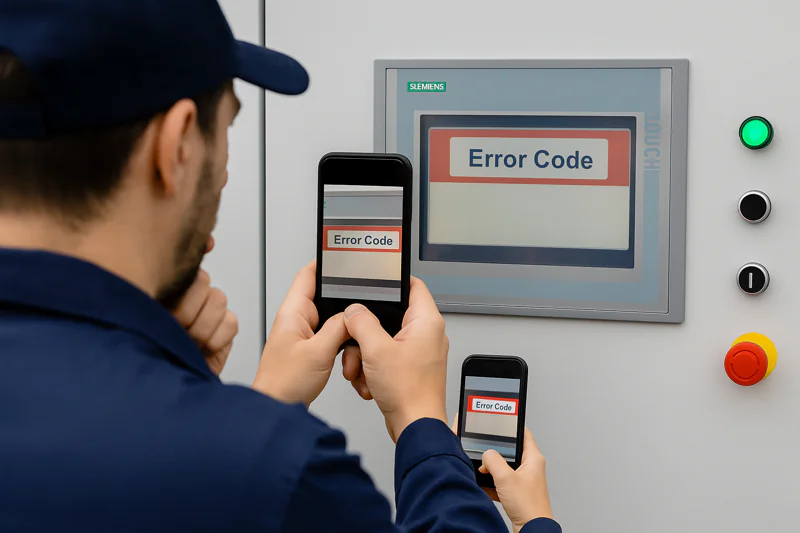
Don’t Ignore the Clues
The control system, usually a Siemens PLC6 in our machines, is the brain of the operation. It’s constantly monitoring dozens of sensors for pressure, temperature, and motor status. An error message isn’t a failure; it’s a protective measure. The machine is telling you exactly what is wrong to prevent damage. Ignoring it and just trying to restart is one of the worst things you can do. A "High-Pressure Fault7," for example, is the system screaming that the refrigeration circuit is overheating. As we just discussed, the most common cause is a dirty condenser. Resetting the machine without cleaning it forces the very expensive compressor to run under extreme strain, which can lead to permanent damage.
Let’s create a simple action plan for your team. When an alert appears:
- Stop. Do not press reset.
- Document. Write down or take a photo of the error message.
- Think. What system does this error relate to? (Vacuum, Refrigeration, Electrical).
- Inspect. Perform a quick, safe visual check. For a high-pressure fault, look at the condenser. For a "Motor Overload8" fault, look at the main electrical panel to see if a breaker has tripped. For an "E-Stop Active" fault, walk around the machine and find the emergency stop button that has been pushed.
- Act. If you find a simple cause (a dirty condenser, a pushed E-stop), you can safely rectify it and then perform a single reset. If a breaker has tripped, you can reset it once. If it trips again immediately, do not touch it again. This indicates a serious electrical problem that requires a professional electrician. This systematic approach empowers your operators to be first responders, solving simple problems instantly and providing clear, accurate information when they do need to call for technical support, which is critical for a buyer like Norman who values efficient communication.
| Common Error Message | What It Means | Your First Action |
|---|---|---|
| Refrigeration High-Pressure Fault | The refrigeration system is overheating. | Safely power down. Inspect and thoroughly clean the condenser coils and check the condenser fan. |
| Vacuum Pump Motor Overload | The pump’s motor is drawing too much current. | Check the main circuit breaker. If tripped, reset ONCE. Look at the pump’s oil level and condition. |
| Failure to Reach Setpoint | The cycle timed out before reaching target pressure/temp. | This points to an efficiency problem. Check the door seal for leaks or the condenser for dirt. |
| Phase Sequence Error9 | The incoming 3-phase power is wired incorrectly. | This usually happens after installation or electrical work. A qualified electrician must swap two of the main power leads. |
What do unusual noises from my vacuum cooler mean?
Your machine has always had a consistent hum, but today you hear a new, loud squeal, a rattle, or a heavy vibration. You’re worried a key component is about to break apart, potentially causing a dangerous and costly failure.
Listen closely and try to identify the source and type of noise. A high-pitched squeal often indicates a failing bearing, while a rattling or clanking noise usually points to a loose component like a fan blade or a guard.
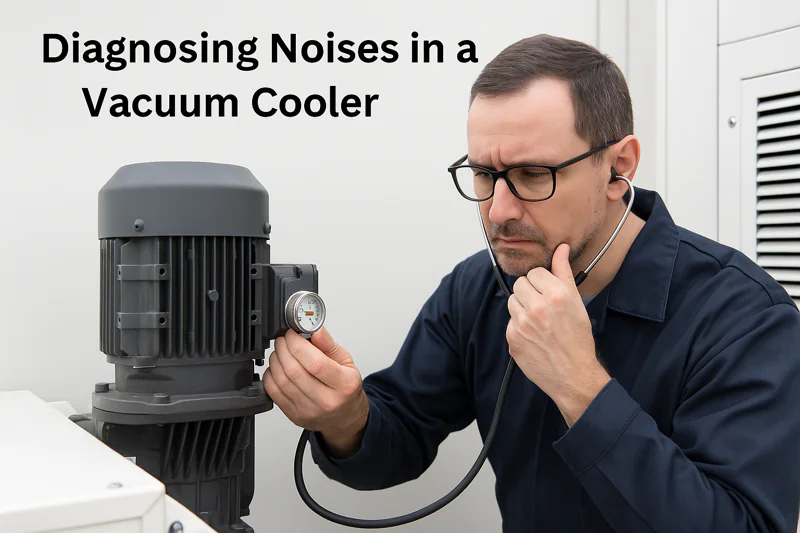
Your Machine is Talking to You
Mechanical components rarely fail silently. The noises your machine makes are early warning signs of wear and tear. Learning to distinguish between them can be the difference between a simple, proactive repair and a catastrophic, production-stopping breakdown. You and your team are around the machine every day, so you are the best people to notice when a new sound appears. When you hear something new, don’t ignore it. Try to pinpoint where it’s coming from. Is it from the vacuum pump? The condenser fans? A motor?
Let’s decode some common sounds. A high-pitched, continuous squeal is the classic sound of a dry or failing motor bearing. Bearings are what allow the shafts in motors and pumps to spin smoothly. When they lose lubrication and wear out, they create friction and heat, which produces that distinct sound. If you hear this, the motor needs to be replaced soon, but you have a warning. A rattling or clattering sound, especially one that changes with motor speed, is almost always something that has come loose. It could be a fan blade that is slightly out of balance, a protective metal shroud that has a loose bolt, or a piece of debris that has gotten caught somewhere. A safe, powered-down inspection can often reveal the culprit. A loud humming or buzzing noise, especially from the electrical cabinet, could be a failing contactor or relay. These are the heavy-duty switches that control the motors. Sometimes they can get "stuck" or chatter, which requires attention from an electrician. Don’t let these sounds become part of the normal background noise; they are calls to action that can save you from much bigger problems down the road.
Conclusion
Troubleshooting your vacuum cooler doesn’t have to be intimidating. By starting with the simplest solutions for the most common problems—seals, cleanliness, and power—you can solve most issues yourself, minimizing downtime and keeping your operation running smoothly.
-
Learn how to effectively use the dollar bill test to identify leaks in your vacuum chamber. ↩
-
Understanding the role of the door seal can help you maintain optimal vacuum conditions and prevent leaks. ↩
-
Explore common vacuum pump issues to ensure your equipment operates efficiently and effectively. ↩
-
Regular maintenance can significantly enhance the lifespan and efficiency of refrigeration systems, preventing costly breakdowns. ↩
-
Understanding the condenser unit is crucial for maintaining efficiency in refrigeration systems, ensuring optimal cooling performance. ↩
-
Explore this link to understand the role of Siemens PLCs in automation and control systems. ↩
-
Learn about the causes and solutions for High-Pressure Faults to prevent costly damages. ↩
-
Discover the reasons behind Motor Overload and how to effectively address it. ↩
-
Find expert guidance on resolving Phase Sequence Errors to ensure safe and efficient operation. ↩

Mila
You May Also Like
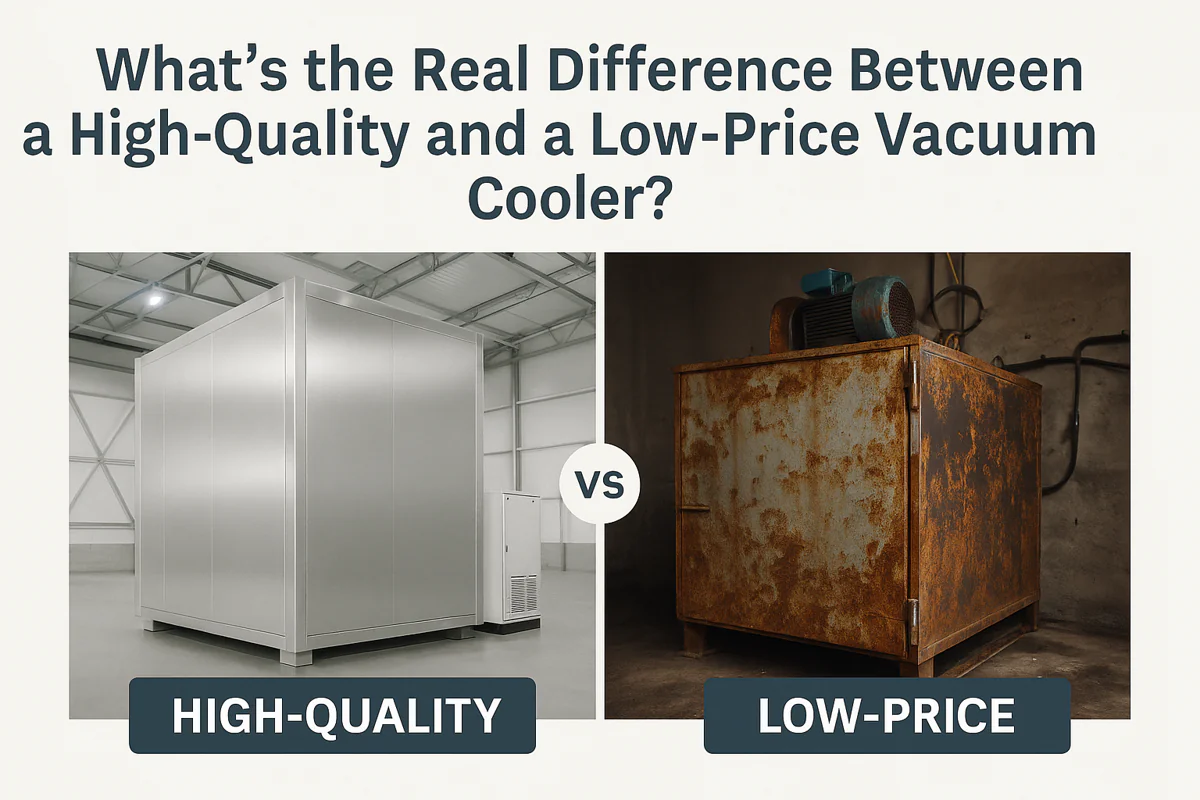
What's the Real Difference Between a High-Quality and a Low-Price Vacuum Cooler?
You are looking for a vacuum cooler, and you see a huge range of prices. One supplier quotes a price
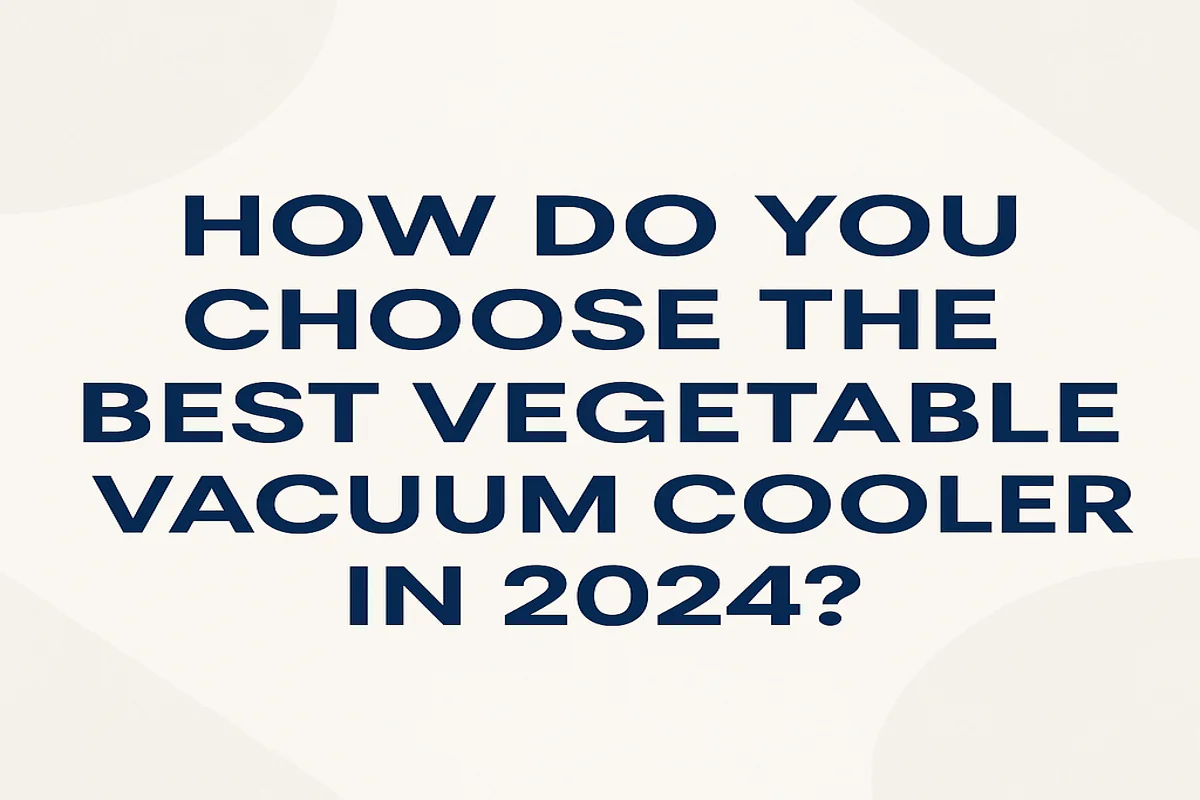
How Do You Choose the Best Vegetable Vacuum Cooler in 2024?
Choosing a vacuum cooler is one of the biggest investments you’ll make in your farm or food business. The market

What Can You Learn from Farms That Mastered Vacuum Cooling?
You see the challenges in your own operation every day: the race against field heat, the constant worry about shelf
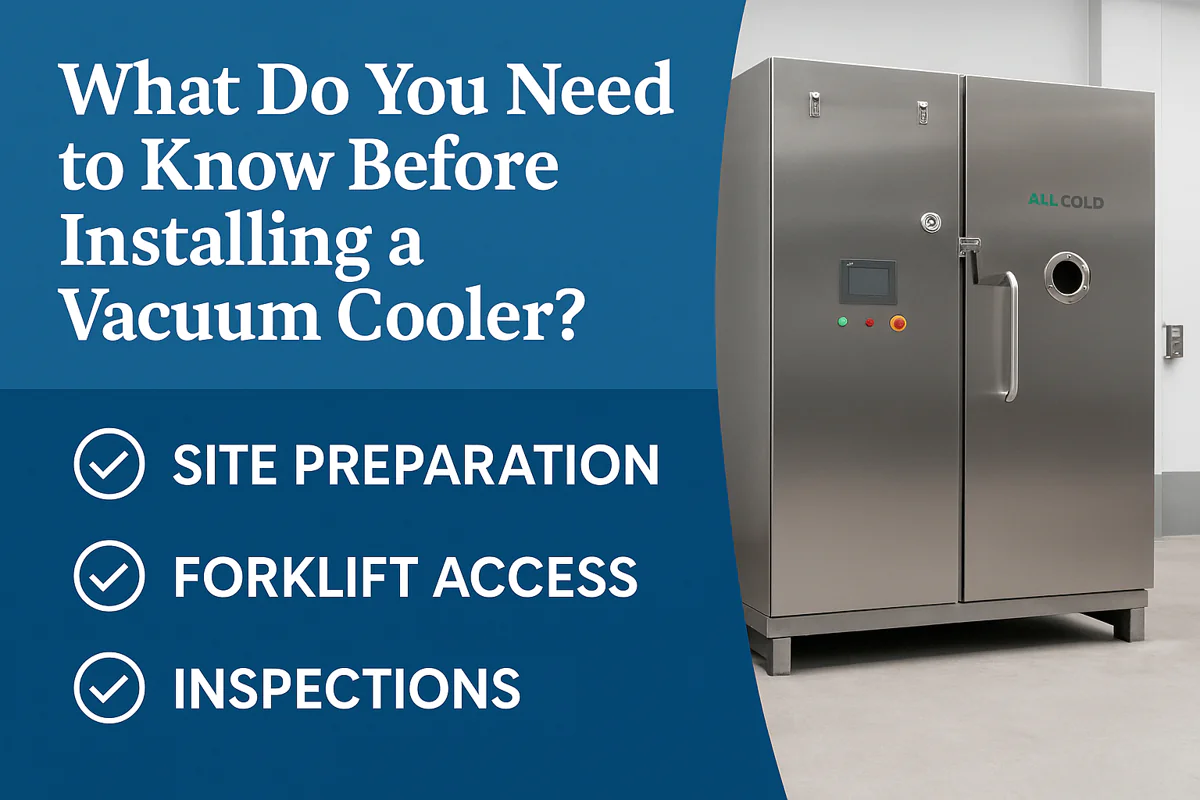
What Do You Need to Know Before Installing a Vacuum Cooler?
You are ready to upgrade your cooling process, but the thought of a complex installation is daunting. You worry about
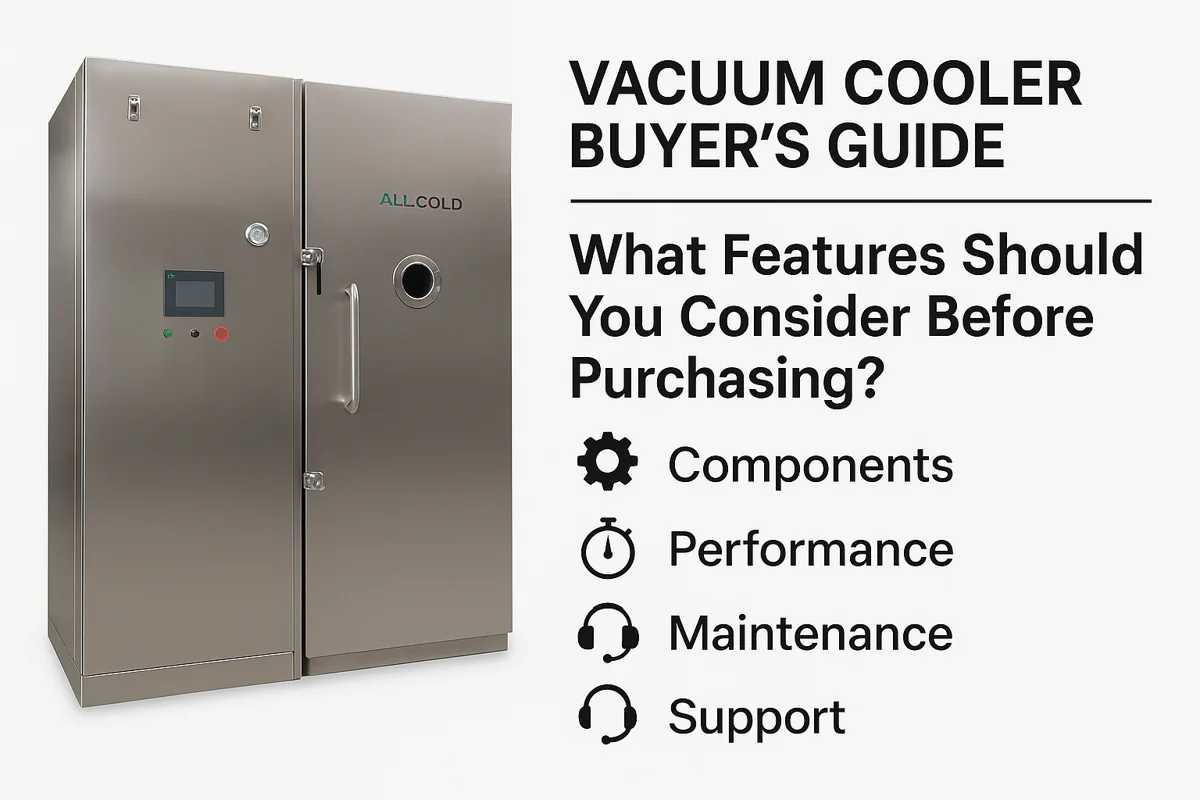
Vacuum Cooler Buyer's Guide: What Features Should You Consider Before Purchasing?
Making a major equipment investment is stressful. You know you need a vacuum cooler, but with so many options, choosing
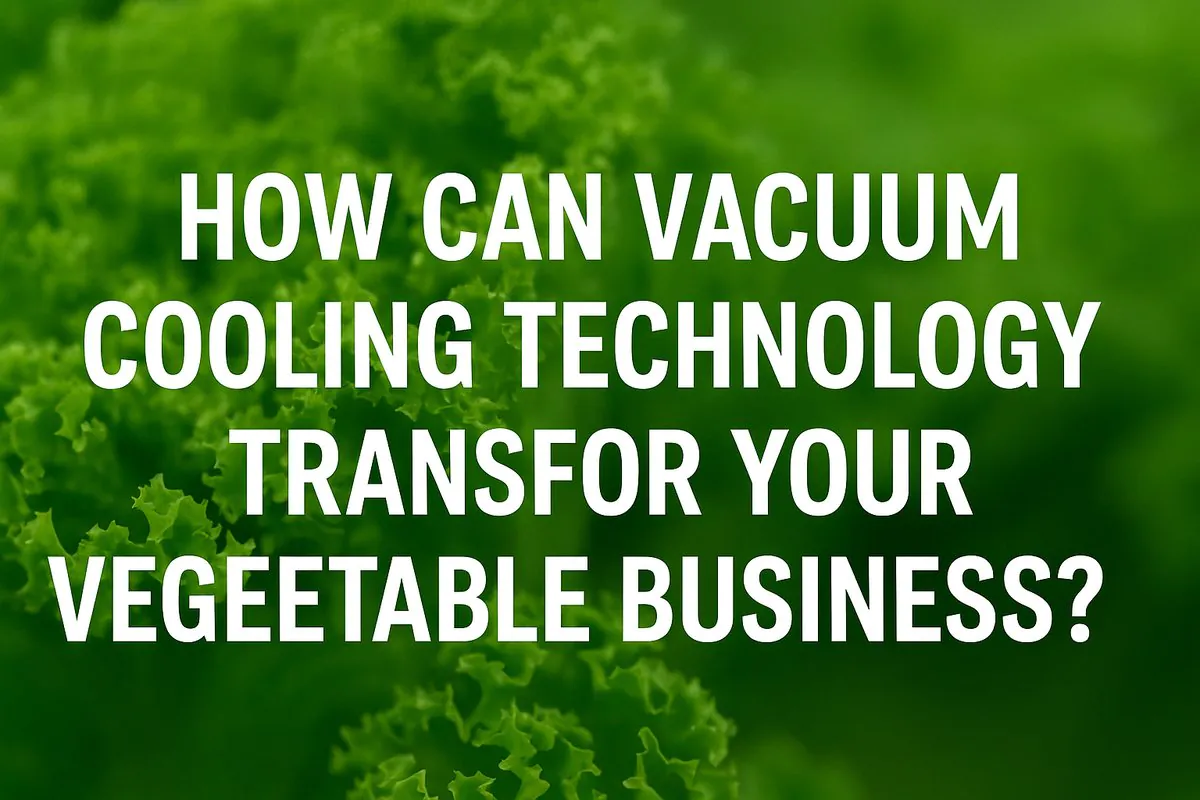
How Can Vacuum Cooling Technology Transform Your Vegetable Business?
You harvest beautiful, fresh vegetables, but by the time they reach the market, field heat has already started to degrade
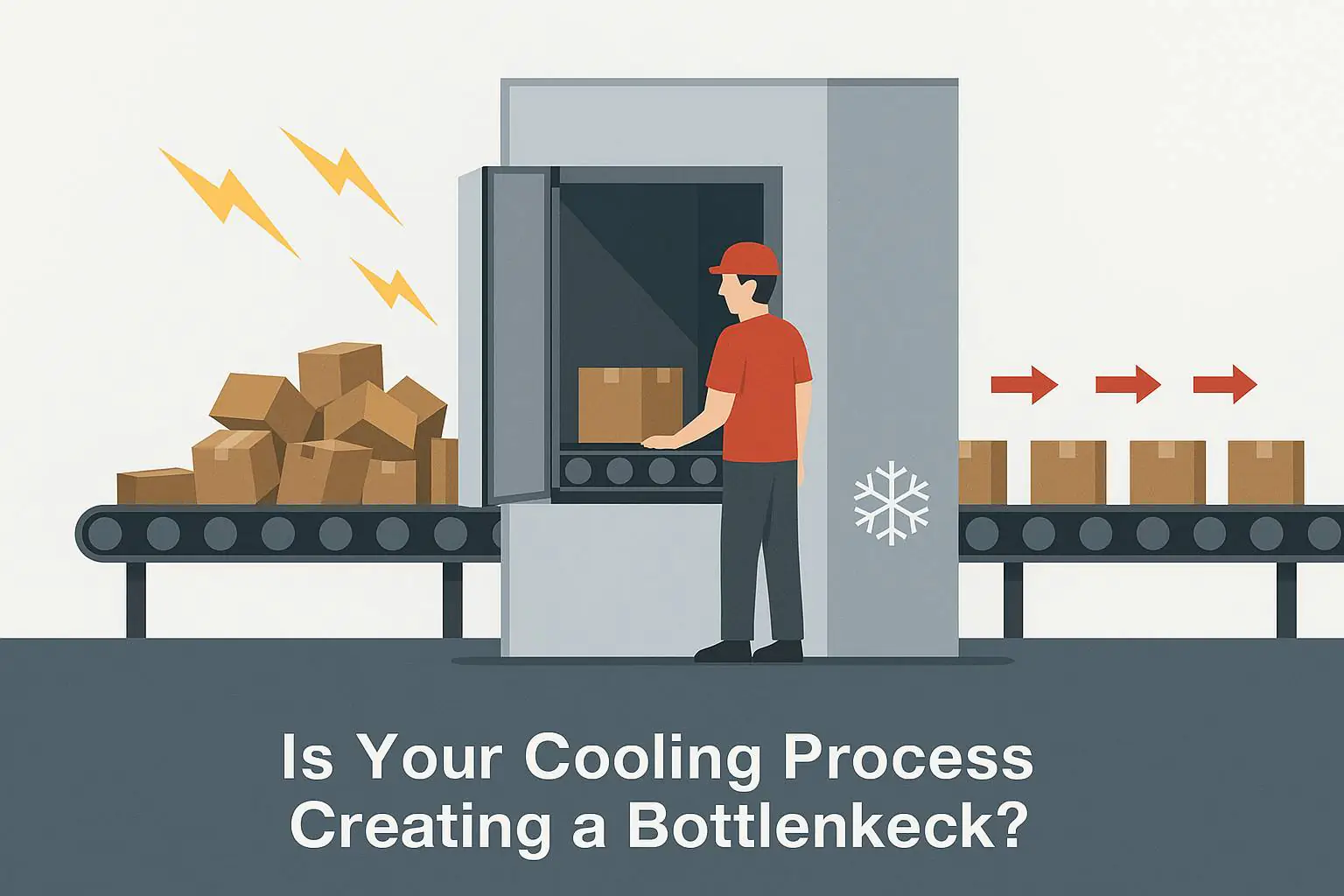
Is Your Cooling Process Creating a Bottleneck in Your Production Line?
Your production line constantly stops, waiting for your cooling process to catch up. This bottleneck wastes time, increases labor costs,
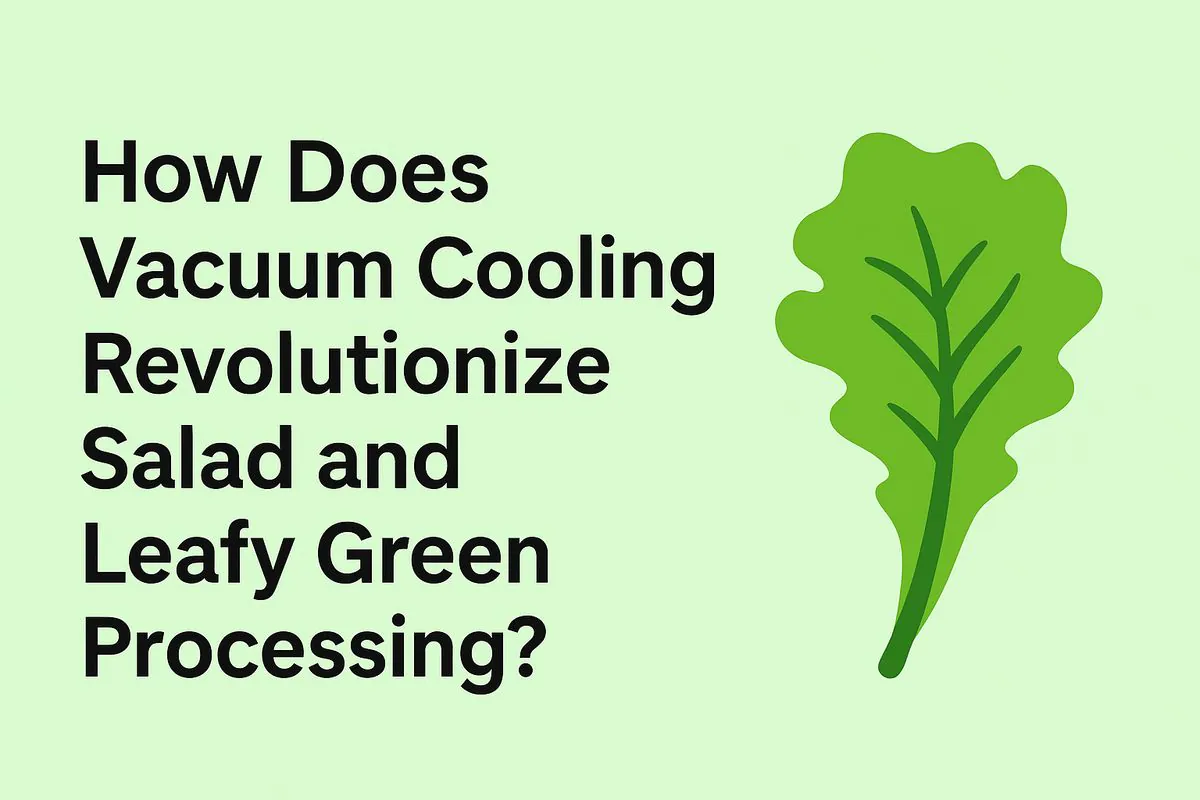
How Does Vacuum Cooling Revolutionize Salad and Leafy Green Processing?
Your leafy greens look perfect when harvested, but wilt and decay alarmingly fast. This short window cuts into profits and
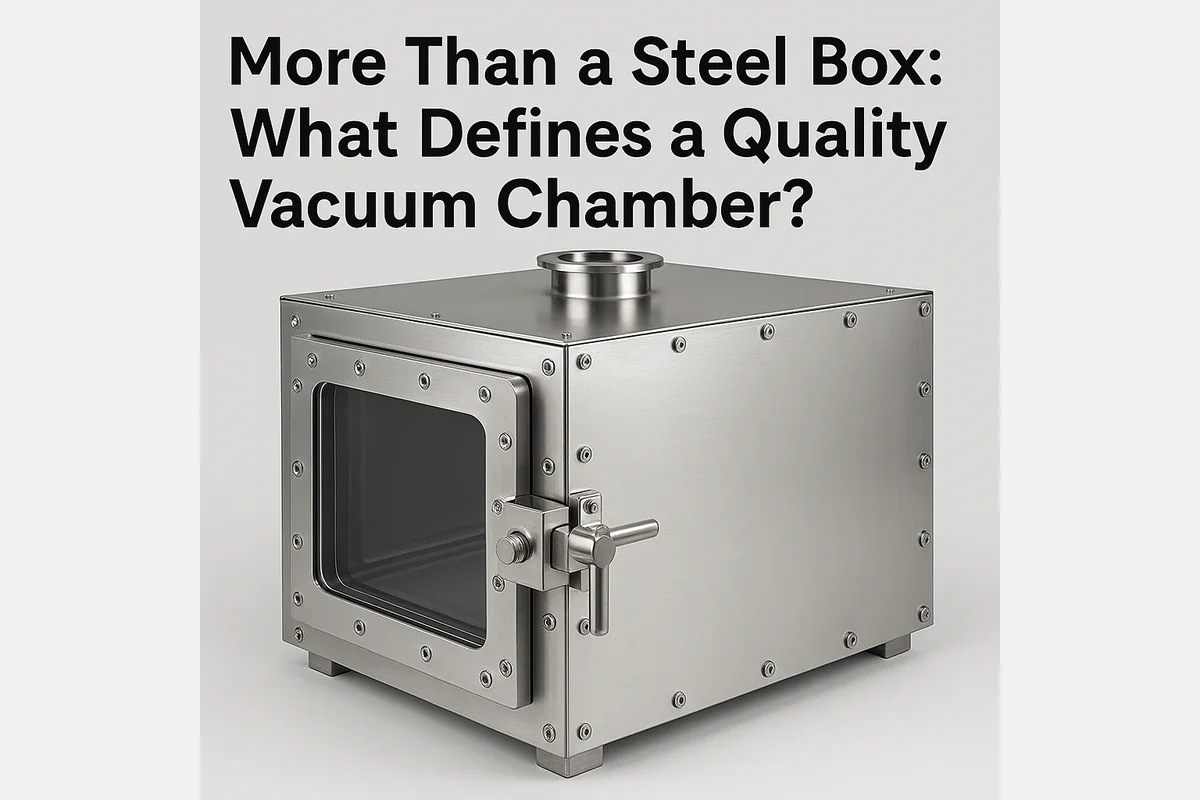
More Than a Steel Box: What Defines a Quality Vacuum Chamber?
You look at a vacuum cooler and see a big metal box with a door. It’s easy to think they

Beyond the Box: What Architectural Designs Make a Great Vacuum Cooler?
You’re looking to invest in a vacuum cooler, and many of them look the same: a simple steel box. But
